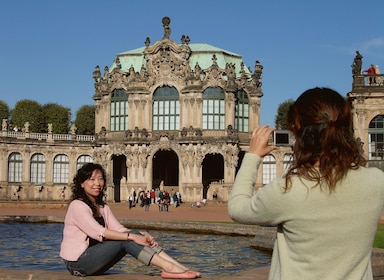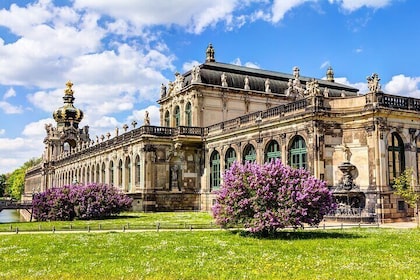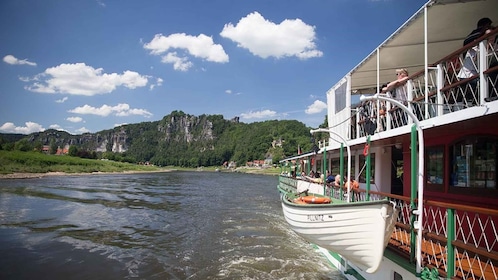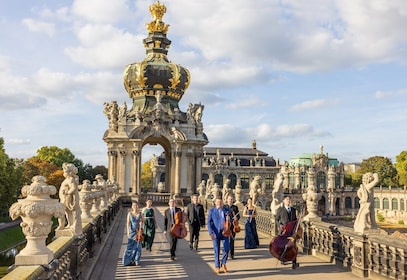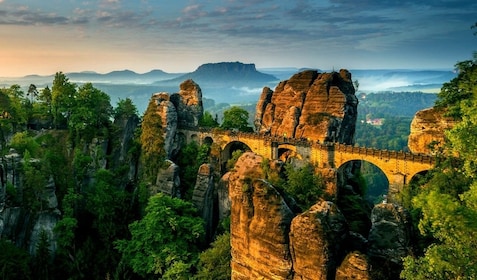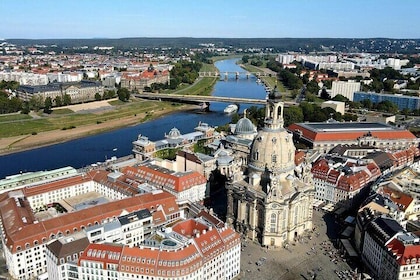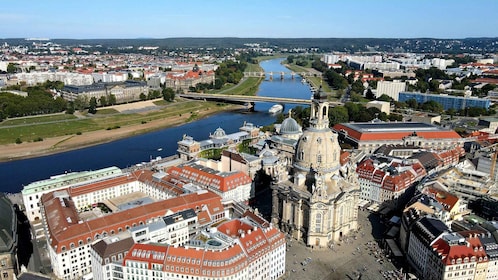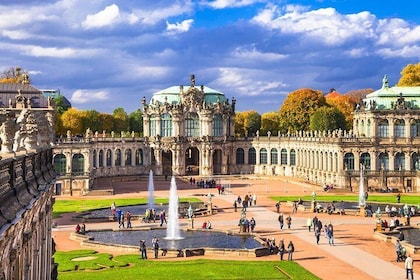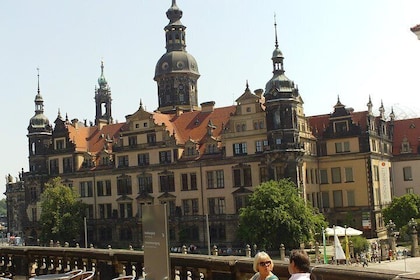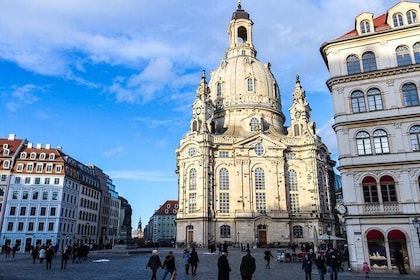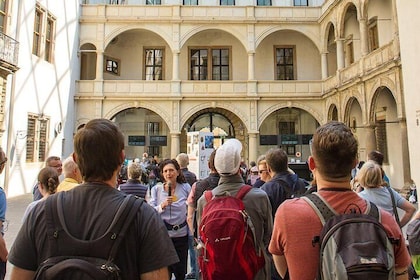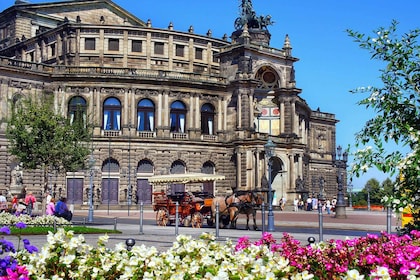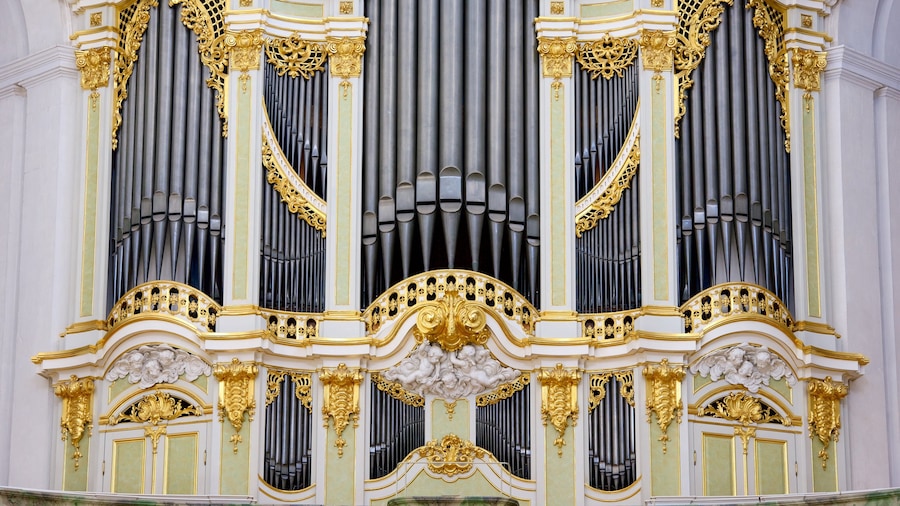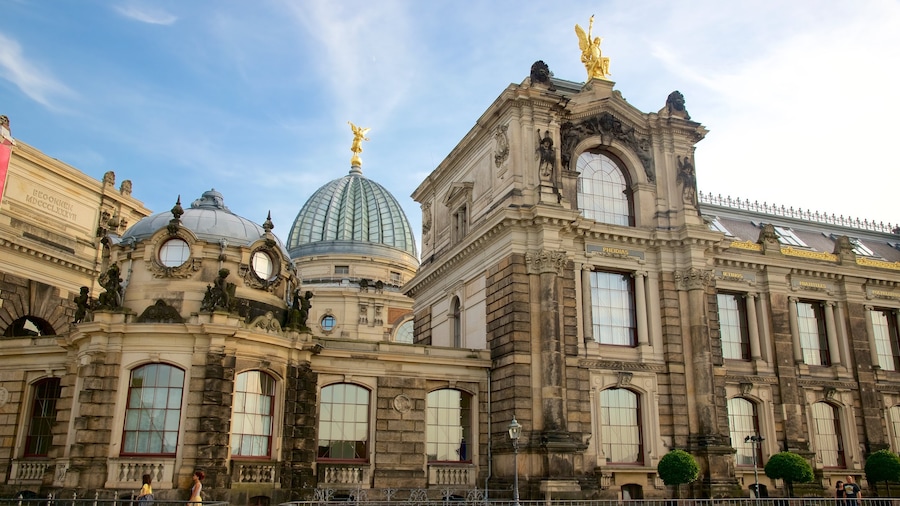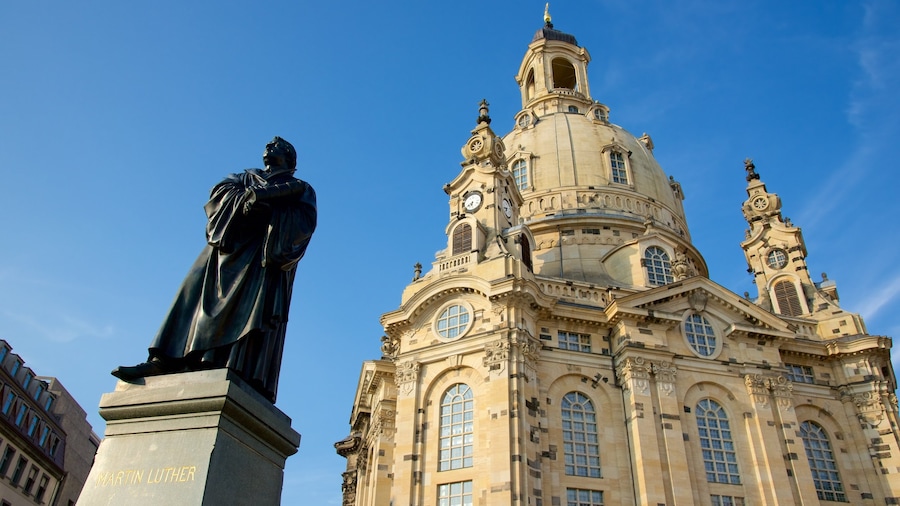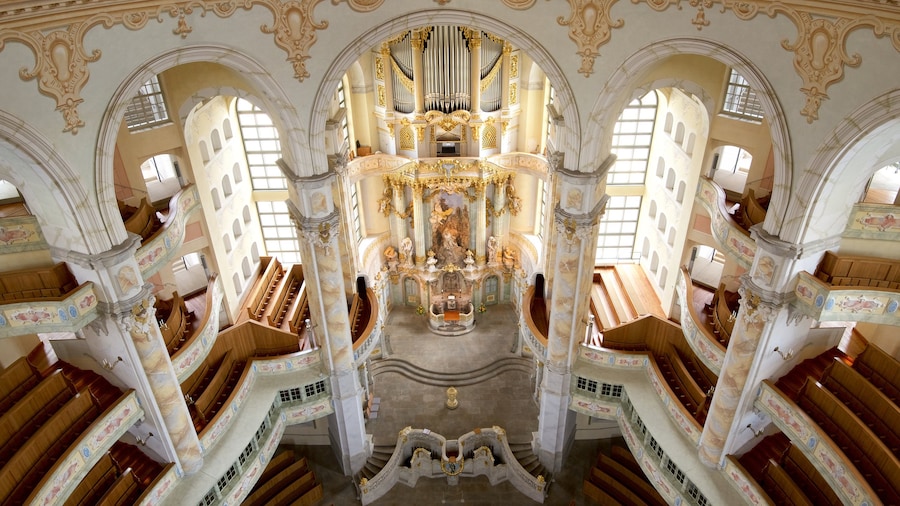Visit Dresden’s Royal Palace to witness one of the longest and most iconic works of art the city has to offer.
Adorning an entire wall of the former Royal Palace, this enormous mural is considered one of the most important of its kind in Germany. Comprised of about 25,000 individual painted tiles, the Fuerstenzug (or Procession of Princes) is a 335-foot (102-meter) long mural that holds the record as the longest porcelain artwork in the world. Visit the Fuerstenzug to admire the intricate detail, the protective measures that have been taken to ensure its longevity and to discover the story of the Saxon royalty depicted in the mural.
The Fuerstenzug is located on the outside wall of the palace’s former stables, meaning it can be viewed without entering the palace complex. Take a stroll along the cobbled Augustusstrasse to appreciate the scale of the mural. While a mural had long adorned the wall of the stables, it wasn’t until the late 19th century that Wilhelm Walther was commissioned to paint an image depicting the 35 rulers of Saxony. Look for the artists’ self portrait at the end of the procession Walther included himself as the last of the 93 people depicted in the mural.
Following rapid deterioration by the turn of the century, the painting was replaced with the porcelain titles to ensure the image would last. The mural managed to survive the destruction of much of the city during the 1945 bombing of Dresden and is now considered one of the highlights for any visit to the city.
After walking the length of the mural, enter the Royal Palace to discover more historic art. Since its reconstruction following World War II, the palace has become the Palace of Art and Science and is home to a vast collection of coins, armory and paintings.
The Fuerstenzug can be visited daily and there is no charge to view the mural. Visit during daylight hours for the best views of the mural. Arrive by tram or bus as street parking in the historic precinct can be difficult to find at peak times.






